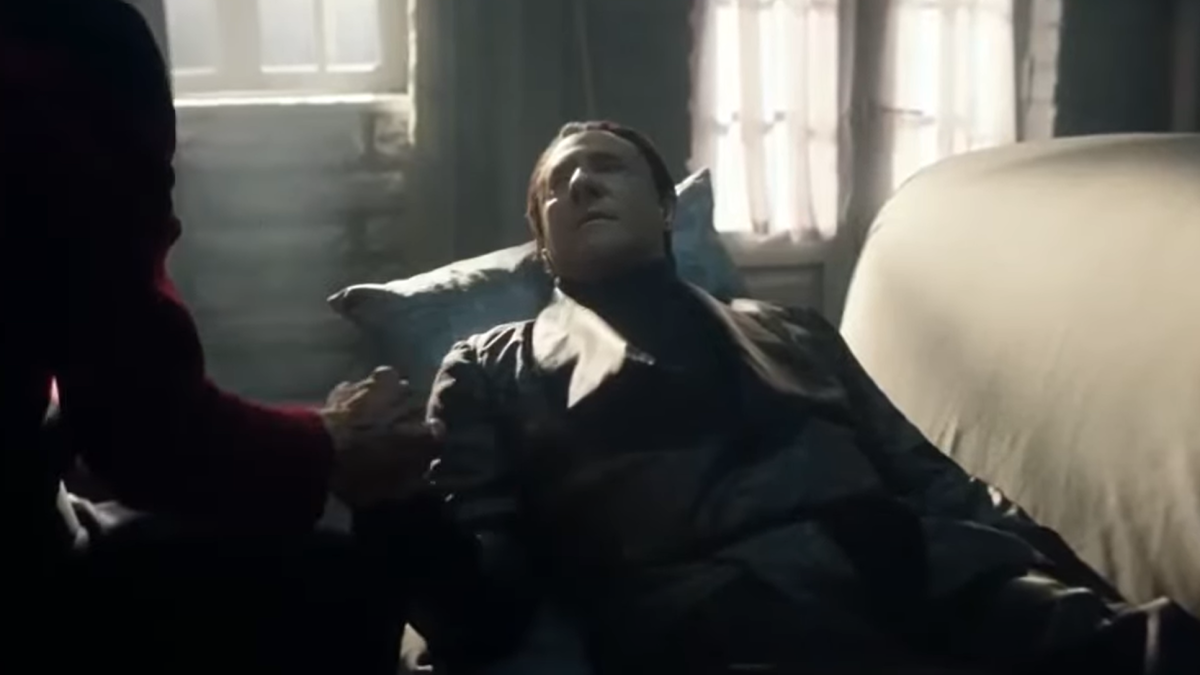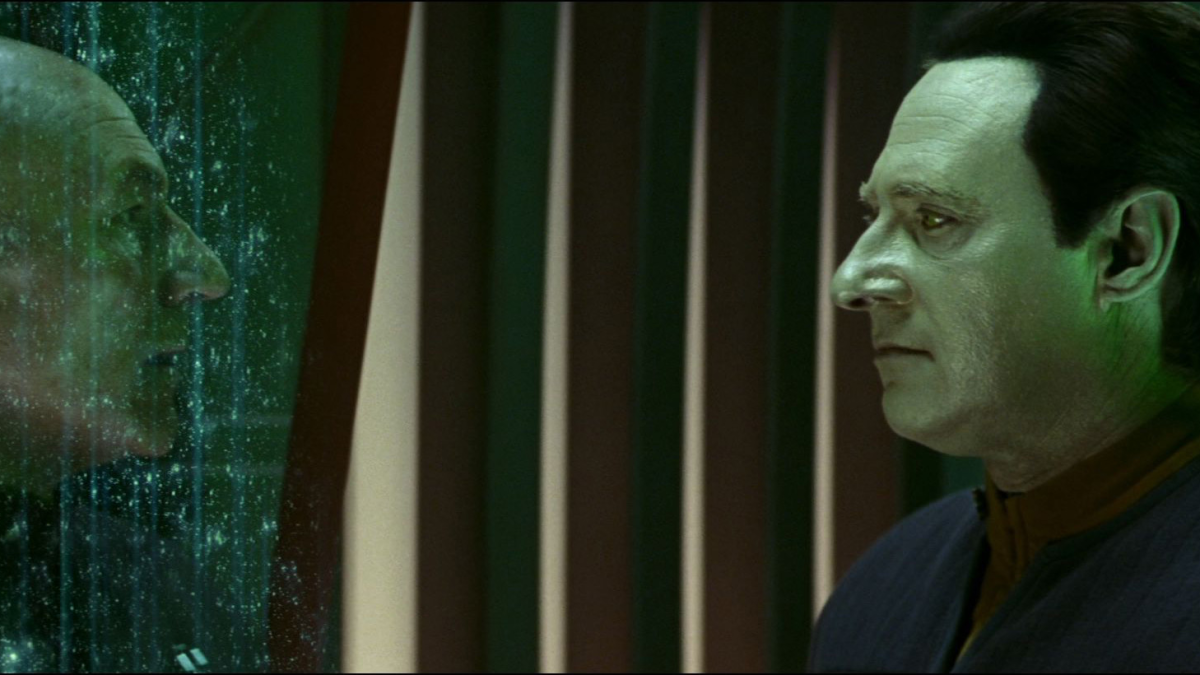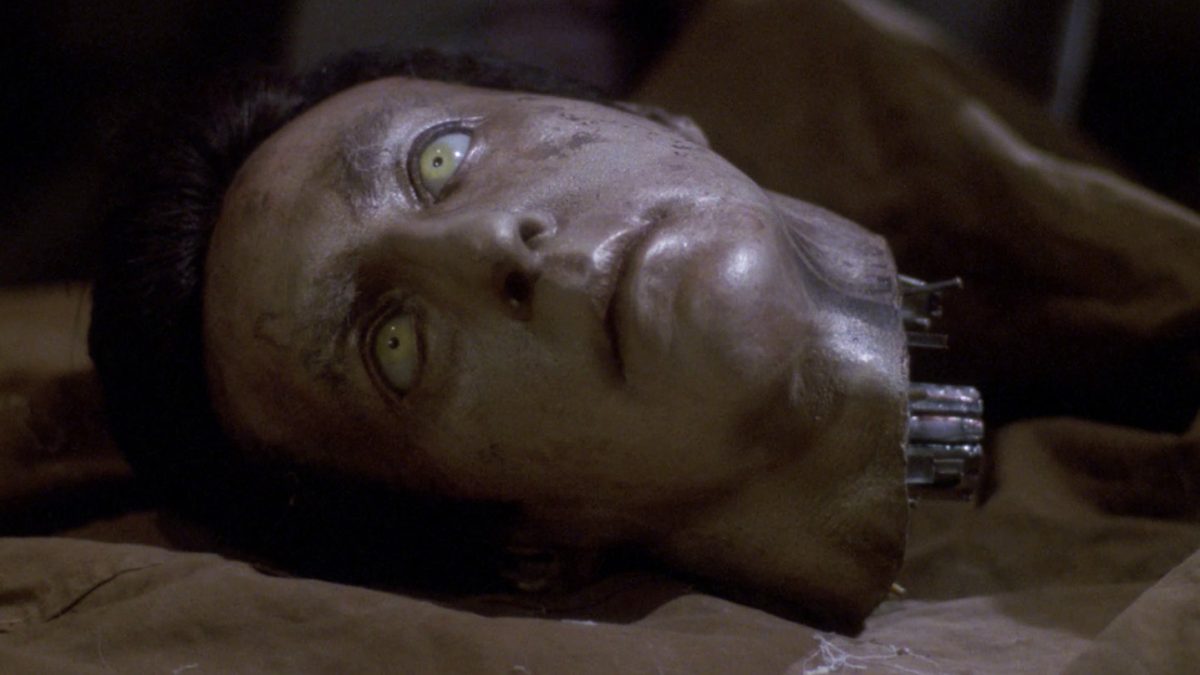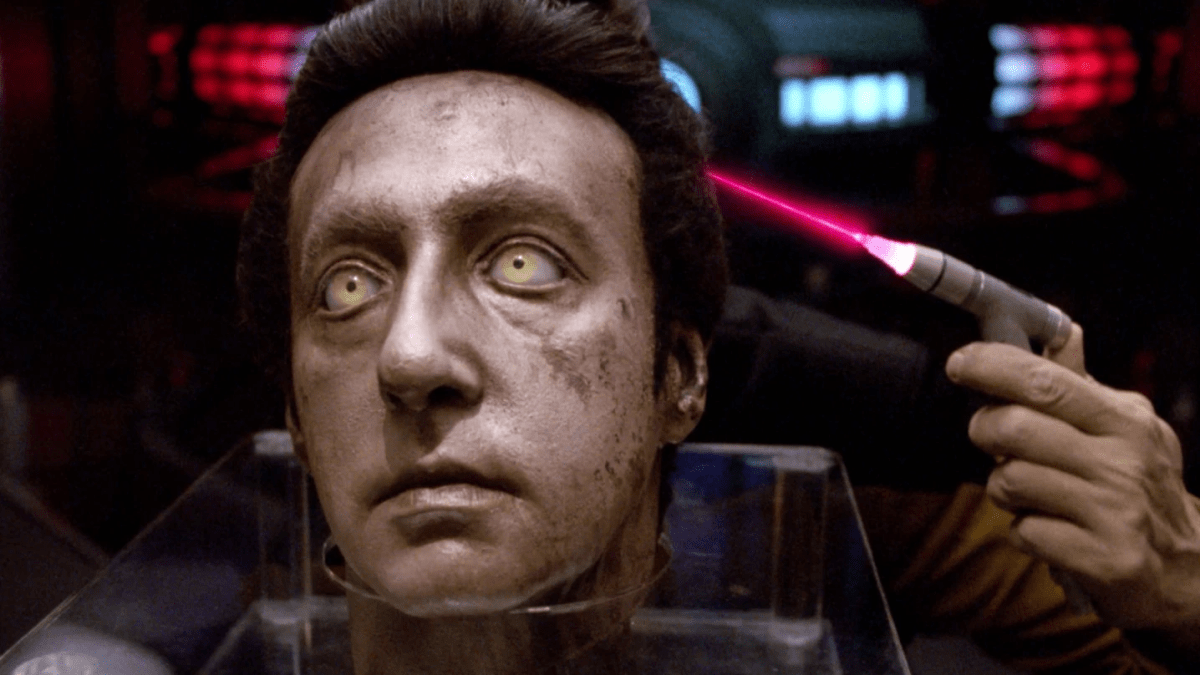Based solely on his first appearance in the pilot episode of Star Trek: The Next Generation, no jury on Earth would convict you for wanting Data dead. He was creepy and weird, and he got crazy eyes when people whistled “Pop Goes the Weasel.”
But then he grew on us, becoming probably the franchise’s greatest addition to its long history of Pinocchio characters. And if there’s one thing Star Trek loves to do to its Pinocchio characters, it’s kill them to make the audience cry. Here’s every time that the series bumped off Data, ranked in ascending order by how much they bummed us out.
Picard

Data seemed pretty dead going into Picard’s debut season, following a severe exploding at the climax of Star Trek: Nemesis. Then Jean Luc started having dreams – dreams about his old pal Data inviting him to finish a painting through a face that was somehow both too CGI and not CGI enough. Was this Picard’s irumodic syndrome catching up with him? The gruesome end of a story foreshadowed nearly 30 years prior?
No, it turned out that it was way simpler than that. See, Data’s positronic brain was so advanced, it could be reconstructed from a single positron. Using the same fractal neuronic cloning procedure that we all tool around with in our hobby rooms from time to time, a team of scientists – including Bruce Maddox and one of about a thousand Star Trek mad scientists who look like Brent Spiner – rebuilt Data’s consciousness in a supercomputer. Data lived inside the machine for 20 years. Then Picard showed up, and Data politely requested a swift death.
Honestly, by the end of the first season of Picard, it was hard to blame him. Whatever atrocities Nemesis was guilty of, at least it didn’t put us through 10 episodes of Star Trek’s potty language phase and an endless, unearned scene where Data calls Picard the World’s Best Boss. We didn’t feel bad when Data died, we only envied him.
Nemesis

Science fiction will break your heart. Sometimes it pulls this off by presenting emotionally affective stories – allegories that change your whole perception of the world. Most of the time, though, it just disappoints you to the point where you don’t know what you ever liked about it to begin with, the same way that you do to your mother and me.
When Star Trek: The Next Generation went boldly into the new millennium through a quadrilogy of movies, it became clear that the beloved series would be skewing heavily toward the second option. Good, Star Trek-y conversations like “when is forced relocation moral?” and “do genetics determine the nature of the soul?” got sidelined in favor of explosions and screaming.
The biggest hit that the stories took came in Star Trek: Nemesis, the last film in the franchise. If you squint, you can almost make out where the good ideas were: Picard and Shinzon wrestling over genetic determinism, asking whether a man is destined to live a certain way while Data is forced to decide how he’s going to die.
There’s a lot to love about the story that’s told by Data’s death in Nemesis, if you stretch enough ahead of time. It’s the inevitable end to the story arc that the show had started 15 years earlier, with a machine that wants to be a man achieving something close to his goal through an act of sentient self sacrifice. Its only sins were that is was all taken back in Picard, that it didn’t make a lick of sense, and that it happened in this dog turd of a movie. Once you get past those things, the scene really works.
Star Trek: The Next Generation

Not to editorialize, but this one is subjective. All art is subjective. All art involving android heads being torn from their bodies and punted across centuries by time’s terrible foot is, without exception, subjective.
1992 was a tough time to be four years old and love Star Trek. The zany, kid-friendly Deep Space Nine with all its domestic terrorism plotlines that kids go crazy for was still a year out. Meanwhile, Star Trek: The Next Generation decided to wrap its fifth season with a harrowing promise: That Data, trapped in the 19th century, was going to get his head knocked off and die. The Enterprise crew had already found his disembodied gourd. The fate of the silly robot man was sealed, kids.
Then the show made you wait three months for the start of the next season. Data does get his head popped off, and it gets left in a cave as a means of communication with the future by Picard, who Data apparently loved for reasons that keep getting harder to parse. He’s revived before the end of the season six debut, and some people might argue that being headless in a cave for 500 years isn’t the same as dying if you can bounce back from it later, but try telling that to an emotionally wrecked preschool-age me, weeping into a shag carpet because Data’s head came off.

